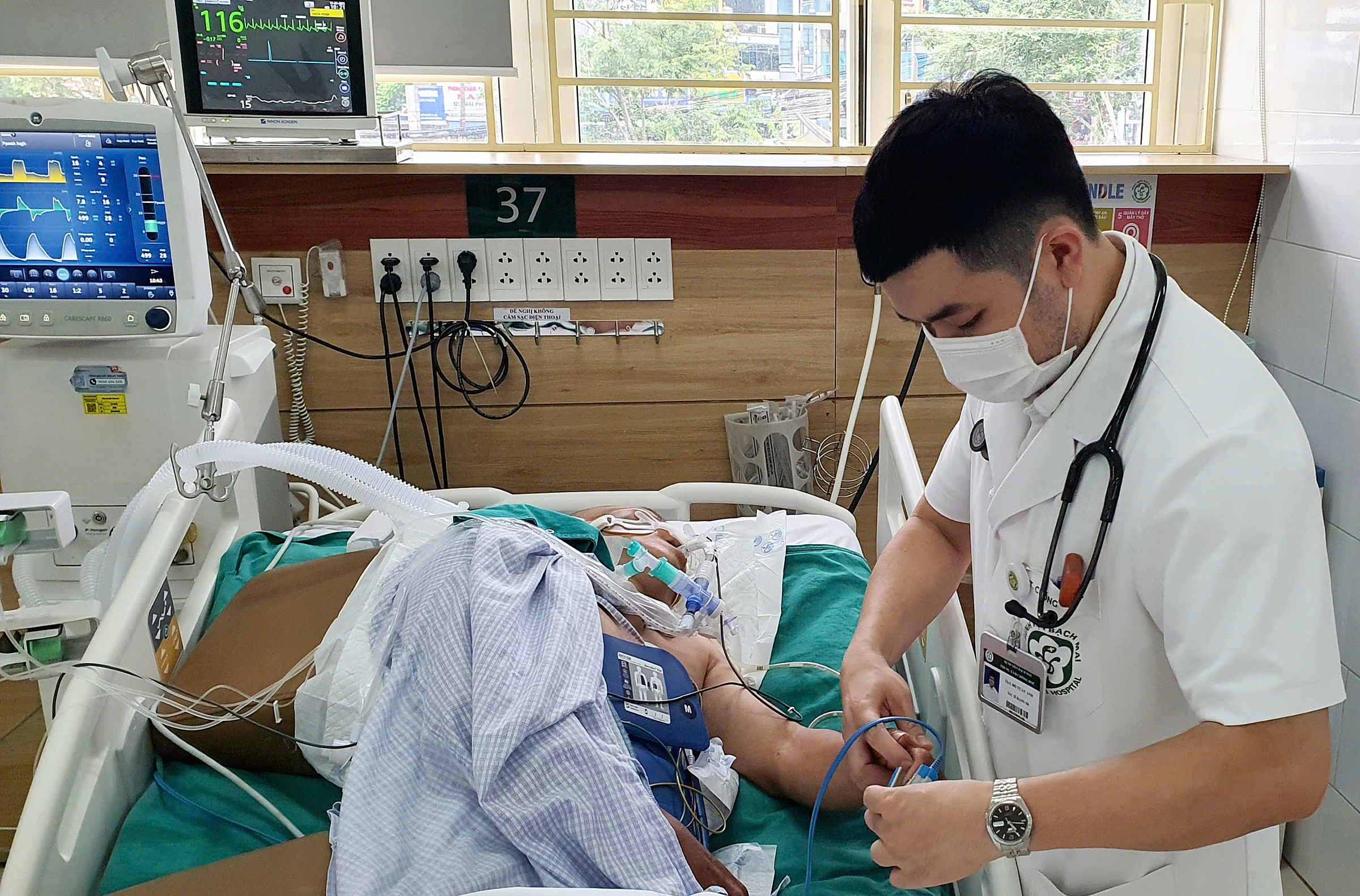The man, from Lao Cai, was bitten a few days ago. Instead of going to a hospital, he sought treatment from a local traditional healer. Two hours later, he began having difficulty speaking, prompting his family to take him to a hospital. On the way, he experienced full-body convulsions, cyanosis, respiratory failure, and cardiac arrest.
Doctors at a district hospital resuscitated him, restoring his heartbeat and intubating him. He was then transferred to the Poison Control Center at Bach Mai Hospital in Hanoi, where he was diagnosed with a coma resulting from cardiac arrest caused by the king cobra bite.
He remains in a coma with low blood pressure and heart damage. He is currently receiving intensive care, including therapeutic hypothermia to protect his brain, and antivenom treatment. However, such cases often face a high risk of severe brain damage and even death.
Dr. Nguyen Trung Nguyen, Director of the Poison Control Center, stated on 17/7 that with venomous snakebites, the "golden time" for saving a patient is only a few hours. Without prompt administration of specific antivenom at a medical facility, the consequences can include partial necrosis, respiratory paralysis, cardiac arrest, brain damage, and death.
Snakes like the king cobra, kraits, cobras, and some sea snakes and vipers contain neurotoxins that cause rapid paralysis. These toxins can lead to respiratory paralysis and life-threatening respiratory failure within hours.
Traditional remedies such as applying herbs, consuming herbal concoctions, using "snake stones," rhinoceros horn, applying chicken, or using "traditional medicines" are completely ineffective in neutralizing venom. These practices waste valuable time that could be used for proper medical treatment.
The Poison Control Center recorded the death of a traditional healer's child in a snake-farming village in Hanoi. The child was bitten by a king cobra but did not go to the hospital. The family treated him at home with traditional medicine.
Dr. Nguyen explained that in some cases, venomous snakes bite without injecting venom or inject very little, not enough to cause poisoning. This is called a "dry bite." Patients show no signs of poisoning and are not in danger. The rate of dry bites from king cobras is as high as 30%. The Poison Control Center has also recorded dry bites from other venomous snakes, including kraits.
Vietnam has about 70 venomous snake species and hundreds of non-venomous ones. Bites from non-venomous snakes are also quite common. When a patient receives a dry bite or is bitten by a non-venomous snake and is treated by a traditional healer without showing symptoms of poisoning, people may mistakenly believe the method is effective. However, relying on a dry bite or a non-venomous snake is extremely risky and can be fatal.
Diagnosis and treatment of snakebites in hospitals have significantly improved. Doctors can not only save lives but also consult online with poison control experts and snake specialists to accurately identify the species involved. Vietnam also has antivenom for common snake species and effective treatment protocols.
"However, the primary recommendation for snakebites remains to get the victim to a medical facility as soon as possible," Dr. Nguyen emphasized.
 |
The patient receives therapeutic hypothermia to protect his brain. *Photo: Nguyen Ha* |
If someone is suspected of being bitten by a venomous snake, remain calm and minimize movement of the bitten area. For bites from snakes that cause paralysis (such as kraits, king cobras, some cobras, sea snakes, and vipers), apply pressure to the entire limb with a bandage and then immobilize it with a splint, similar to immobilizing a fracture, to restrict and slow the spread of venom.
A simpler method is to use available materials (towels, belts, preferably wide bandages or straps) to apply pressure above the bite. Alternatively, a venous tourniquet can be used: tie a band above the bite to block venous circulation, but the pulse should still be palpable in front of the tourniquet.
For bites on the torso, head, or neck, apply direct and continuous pressure to the bite using a folded piece of paper, cardboard, or thick cloth measuring 4-5 cm.
Quickly transport the patient to the nearest medical facility. Keep the bitten area lower than the heart during transport. Do not waste time seeking other treatments, traditional healers, herbal remedies, or waiting to see if they work.
Do not incise the bite or apply any leaves or medications to the wound. If the patient experiences paralysis or difficulty breathing before reaching the hospital, administer first aid and respiratory support on-site, depending on available resources.
Le Nga












